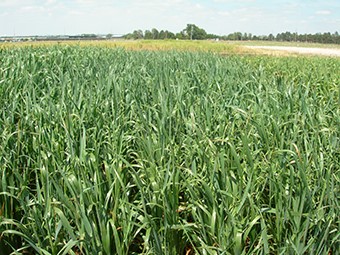
By Aaron Berger, UNL Extension Educator
The good May moisture we have received with continued strong forage prices is encouraging producers to consider what annual forages could be planted into irrigated wheat stubble. The summer annual forages such as sudan grass, sorghum x sudan hybrids, pearl millet, teff, and foxtail millet are all options for producing additional forage. The summer annual forage that is best to plant will depend upon water available, individual goals, available harvesting equipment, and needs. Foxtail millet would be an excellent choice for one cutting of hay or for windrow grazing. A sorghum x sudan hybrid would be the first choice to plant for a crop to chop as silage. Pearl millet and low prussic acid varieties of sudan grass would be good choices for grazing. Even drilling corn at high seeding rates would provide feed for grazing in September and October.
The critical thing for summer annual forages is the remaining length of the growing season. The long range forecasts available through the Climate Prediction Center (http://www.cpc.ncep.noaa.gov/) can give an idea of what the next 90 days may bring in terms of weather. July 20-25 is the target date by which to get the summer annual forages planted. After this time, oats which can accumulate approximately two tons of forage per acre when planted in early August, would likely produce more total forage. Oats are somewhat cold tolerant, withstanding light frosts and temperatures down into the upper 20’s before growth ceases.
When planted in late July or early August, oats will provide high quality forage that can be grazed into the fall and early winter. Research at the High Plains Ag Lab at Sidney, NE, has shown that late summer planted oats can maintain quality amazingly well through the winter. Data from standing oats planted in late July and early August of 2012 harvested and analyzed in early March of 2013 showed oats at 13% crude protein with total digestible nutrient (TDN) values in the mid 60’s. This is better quality than many types of hay often being fed at this time of year! For more information on using annual forages after irrigated wheat see the UNL NebGuide “Utilizing Annual Forages with Limited Irrigation for Beef Cattle During and Following Drought” (http://go.unl.edu/mrvc) With hay and forage prices where they are currently, planting annual forages into irrigated wheat stubble may be a good option this year.